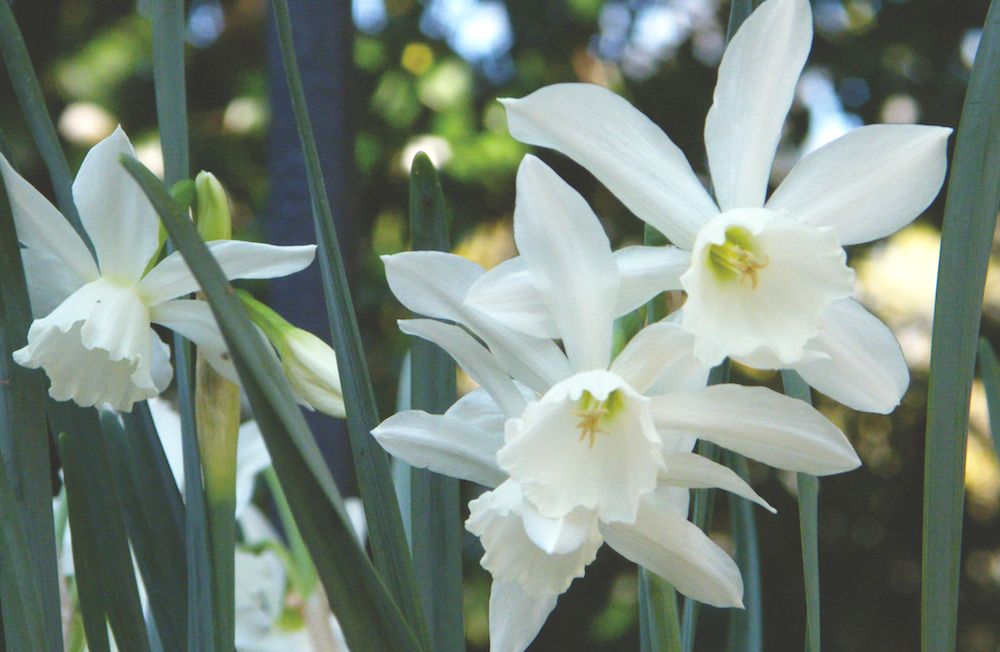“It is a rainy day but this morning I went out and marked all of the japonicas as to color & kind. I also picked 2 lovely bunches of narcissus by the pergola.”
– Alice Callaway’s garden journal, January, 25, 1937
As the heat of summer fades and we look forward to the cooler days of autumn it’s time for gardeners to start thinking about planting fall bulbs, especially daffodils, also known as Narcissus. Those who think ahead will be rewarded with wonderful drifts of yellow flowers in spring. Here at the estate, some old daffodils that date back nearly one hundred years continue to bloom in shrub borders, under old magnolia trees and in our grassy meadows. Last spring, Charlotte Baker, a member of our garden staff, began photographing and carefully studying the bloom time and botanical traits of these under-appreciated bulbs. While her study is only partially complete, she has identified several heirloom varieties growing at the estate.
Since there are many heirloom daffodil varieties, and flower color can vary with seasonal temperatures, identifying old daffodils can be notoriously difficult. As a result, to help with this process we have been studying our old garden records. Several garden journals refer to specific daffodil varieties and indicate the year they were planted. This information has helped us confirm the identity of several bulbs, but it sometimes just lets us know what used to be growing in the garden and is now lost. According to Ida Cason Callaway’s 1927-1931 Flower Book, in 1931 she planted the white ‘Thalia’ daffodil along with daffodils given to her by Mrs. Hand from Pelham and her daughter-in-law Alice Hand Callaway. She also notes ordering and planting some ‘King Alfred’ and ‘Van Waveren Giant’.
Alice Callaway also periodically kept a garden journal and some references to daffodils survive. Based on photographs and notes in her 1941 journal, we know she worked diligently to identify the daffodils in the garden. In 1950, Mrs. Callaway recorded that she had ordered a soft apricot colored daffodil called ‘Mrs. R.O. Backhouse’ to add to the garden. This variety was named in 1921 and no doubt appealed to her because she loved soft subtle colors. Alice also added ‘Mt. Hood’, a white daffodil released in 1938, and ‘Geranium’, an orange trumpeted daffodil that was gaining popularity in the 1930’s. Other daffodils discovered at the estate include: ‘Twin Sisters’, lent lily, several different double varieties (probably ‘Orange Phoenix’ and ‘Sulphur Phoenix’) along with the species hoop petticoat daffodil. While our daffodil study is still ongoing, we have included photographs of a few favorites. These daffodils have stood the test of time and proven that they are well adapted to our tough clays and southern climate.
Soon it will be time to place your bulb order and get planting so you can enjoy this classic garden flower in your garden next spring. To learn more about daffodils we invite you to attend our fall workshop entitled, “Heirloom Daffodils for Southern Gardens” conducted by Sara Van Beck on Saturday, October 22. Sara is a noted daffodil expert and recently authored a new book on daffodils for Florida and the South.
